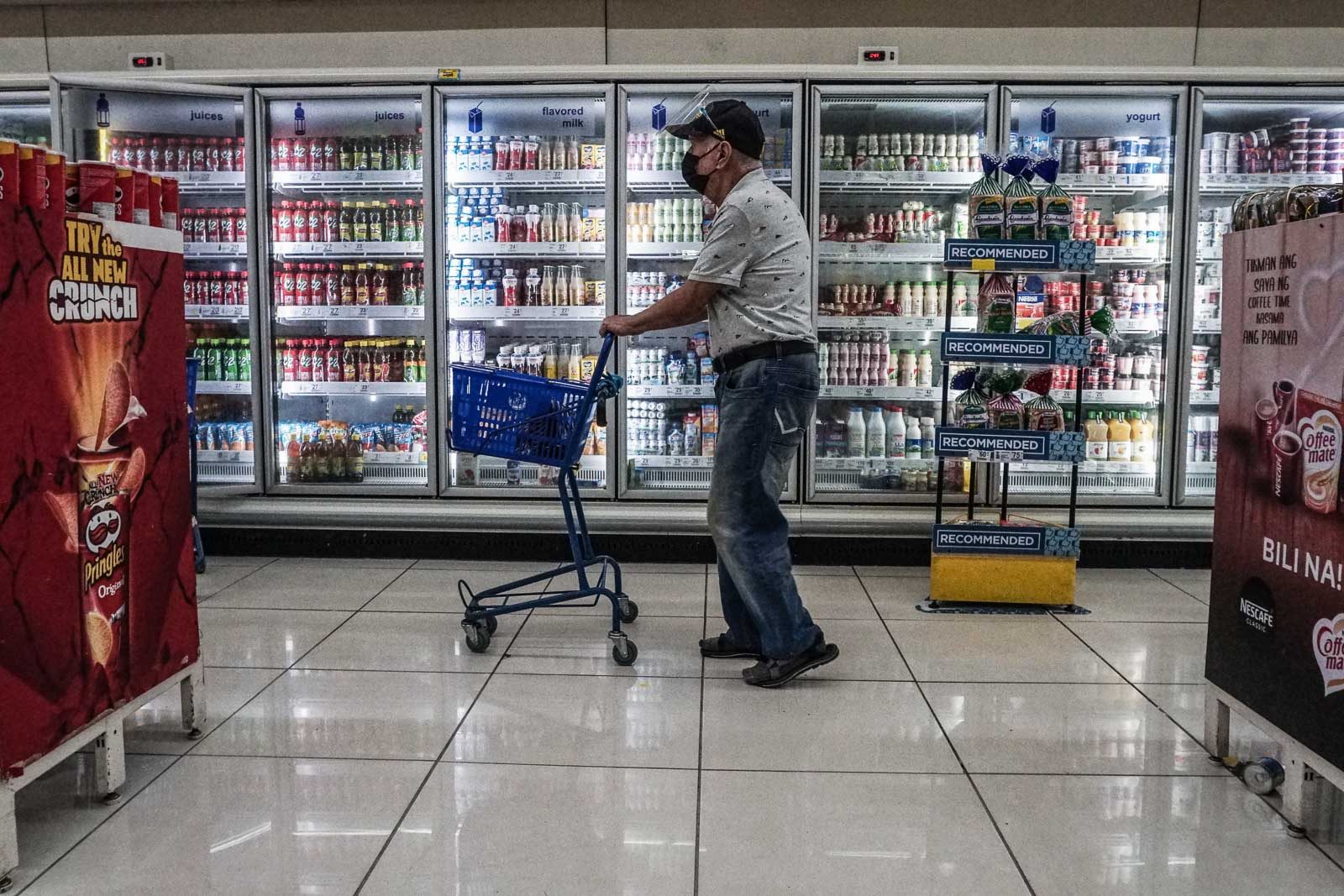SUMMARY
This is AI generated summarization, which may have errors. For context, always refer to the full article.

The Philippines’ inflation rate slightly eased to 4% in July, announced the Philippine Statistics Authority (PSA) on Thursday, August 5.
This is lower than the 4.1% recorded in June and meets the upper end of the Duterte administration’s 2% to 4% target band.
It is also the lowest inflation rate recorded in 2021, so far.
Average inflation for January to July stood at 4.4%, however, still beyond the target.
A year ago, in July 2020, inflation was at 2.7%.
National Statistician Dennis Mapa said in a briefing on Thursday that the slower rate of transport inflation, from 9.6% in June to 7% in July, primarily drove the easing of headline inflation.
In particular, tricycle fares (11.3%), petroleum and fuels (17.7%), and airfare (-8.6%) saw slower rates.
Slower increases in alcoholic beverages and tobacco (10.2%); furnishing, household equipment, and routine household maintenance (2.3%); and restaurant and miscellaneous goods and services (3.6%) also contributed to the downward trend.
But the PSA recorded higher inflation rates for the following commodity groups:
- Food and non-alcoholic beverages (4.9%)
- Clothing and footwear (1.7%)
- Housing, water, electricity, gas and other fuels (2.6%)
- Health (3.1%)
- Communication (0.3%)

Regions, poorest households
Inflation in the National Capital Region in July stayed at the June rate of 3.2%. Inflation in areas outside NCR, meanwhile, inched down to 4.3% from 4.4%.
Cagayan Valley had the highest inflation of 6.9%, while Central Visayas and the Bangsamoro Autonomous Region in Muslim Mindanao saw the lowest inflation of 2%.
While the headline inflation eased, inflation for the bottom 30% income households rose to 4.4% in July from 4.3% in June, driven by the food and non-alcoholic beverages index.
Year-to-date, the inflation rate for the poorest households is at 4.8%.
Within target ‘for how long’?
The Bangko Sentral ng Pilipinas (BSP) earlier projected that inflation for July would settle between 3.9% and 4.7%.
The BSP had said that higher prices of fuel and key food items, as well as the increase in Manila Electric Company rates and a weaker peso, were the main sources of upward price pressures.
In a statement on Thursday, the BSP said its assessment remains that “inflation could settle close to the high end of the target range…over the near term before decelerating back to within the target” by the end of 2021.
“The uptick in international commodity prices due to supply-chain bottlenecks and the recovery in global demand could lend upside pressures on inflation,” added the central bank.
“On the other hand, the emergence of new coronavirus variants and delays in easing lockdown measures are seen to pose downside risks to both demand and inflation.”
ING Bank Manila senior economist Nicholas Mapa expects elevated inflation to persist in the second half of 2021 “despite extremely soft domestic demand with the impending ECQ (enhanced community quarantine) and ongoing recession.”
But he sees the BSP keeping policy rates unchanged for the rest of 2021 and even until 2022, adding that the two-week ECQ in Metro Manila starting Friday, August 6, is yet another “speed bump.”
“BSP Governor Diokno has repeatedly stated his preference to provide support for the fledgling recovery and deliver monetary stimulus for as long as ‘it is needed,'” Mapa said.
“With the economy reeling from the pandemic, we doubt BSP will even consider ‘preemptive’ recalibration of policy rates as policy tightening at this stage will definitely snuff out whatever momentum is left in the economy’s growth engines.” – Rappler.com
Add a comment
How does this make you feel?
![[ANALYSIS] A new advocacy in race to financial literacy](https://www.rappler.com/tachyon/2024/04/advocacy-race-financial-literacy-April-19-2024.jpg?resize=257%2C257&crop_strategy=attention)


![[In This Economy] Can the PH become an upper-middle income country within this lifetime?](https://www.rappler.com/tachyon/2024/04/tl-ph-upper-income-country-04052024.jpg?resize=257%2C257&crop=295px%2C0px%2C720px%2C720px)

There are no comments yet. Add your comment to start the conversation.